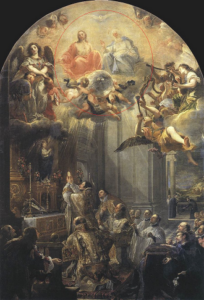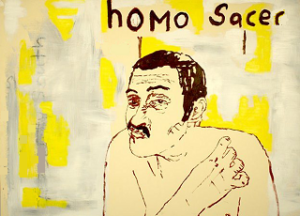
Arquivo para May, 2021
Third wave, new strain and new medicines
While we are looking ahead to a possible third wave in June in Brazil, the numbers are still around 2,000 deaths, as we posted last week if falling could mean contention (a high rate of 78,000 cases, but deaths below 2 thousand) and if it reaches above 3 thousand the third wave has arrived and a new isolation protocol will be necessary (see the graphic).
in Brazil, the numbers are still around 2,000 deaths, as we posted last week if falling could mean contention (a high rate of 78,000 cases, but deaths below 2 thousand) and if it reaches above 3 thousand the third wave has arrived and a new isolation protocol will be necessary (see the graphic).
Regardless of the third wave, there are already several cases of the Indian virus, the new strain, which arrived in Brazil without a strict isolation protocol, it will spread and this is almost hopeless.
The news of an Australian antiviral and an Israeli remedy, the latter MesenCure uses mesenchymal stromal cells (MSCs) isolated from adipose tissue from healthy donors, relieve respiratory symptoms in infected patients and reduce inflammation.
The Australian drug made by scientists at Griffith University, in collaboration with the American City of Hope Research Center, uses a technology that involves gene silencing RNA (siRNA) that directly attacks the virus’s genome and prevents its replication, the test so far it has been done on rats.
We have to keep trying to create protocols as the vaccination does not progress (21.5%).
The state of Rio de Janeiro tries to do a massive vaccination, despite not having enough medicines, the idea is to open the vaccination for the rest of the population, until now only people over 60 and some special classes like nurses, bus drivers and cops.
The state of São Paulo will test, but in two small municipalities Taquaritinga and Batatis, providing RT-aPCR tests and rapid antigen tests, starting with a vertical isolation strategy so criticized at the beginning of the Pandemic, Butantan will make a home visit in 2 thousand homes dividing each municipality into 11 regions called “clusters”, the idea of networks.
It is, therefore, a test by sampling and the population that is not drawn can make a self-assessment through an application called Taina/GHM and answer quick questions.
It is only Trinitarian if there are three people
In the 3rd century Christians began to use the word prosopon  which means the one in three persons, the first Christian council of Nicaea (325) was the divinity of Jesus discussed, because it was even easier, due to the dualism Being and non-Being, believe two than three.
which means the one in three persons, the first Christian council of Nicaea (325) was the divinity of Jesus discussed, because it was even easier, due to the dualism Being and non-Being, believe two than three.
To subsist the dualistic idea, some pseudo-theologians resorted to the idea that God the Father is the source and origin of all divinity, so the other two people were generated by the Father, creating a new way to deny the Trinitarian pericoresis, or if you prefer “ the dance ”in the internal divine relationship.
It was the Cappadocian priests, Gregório Magno, Gregório de Nissa and Basilio de Nissa who saw this contradiction, which comes in a new guise, from the exchange of the word prosopon (persona) for hypostasis and this in turn confused with boldness.
Basilio used the formula of Mt 28,19 which affirms that the communication of the Three in baptism manifests the Holy Spirit in the union of the Father with the son, in the same dignity, and manifests to man in baptism, that is why valid baptism is in the name of Three people.
Basilio classified the expression of faith, on the Trinitarian mystery, transforming and codifying the confused idea in the following formula: “Mia Ousía” and treis hypóstasis ”, presenting a distinction between ousia and hypostasis in the Trinity.
Hearing indicates what is common and unique to the three people, nature and substance. Hypostasis constitutes the particularity that each person of the Trinity constitutes, with no prevalence among them.
Gregório de Nazianzo was the first to apply the term perichoresis in the relationship between the two natures of Christ (Perichoresis cristológica).
Gregório of Nissa states that in the Holy Trinity there is no difference in honor and that the structure that differentiates the servant cannot apply to divine persons, since the divine nature is unknowable and eternal.
Its was John Damasceno in the seventh century (+749) who did further and a synthesis of the doctrine of Cappadocian priests, a new opening developing perichoresis, using it as a technical term designating, both the interpenetration of the two natures in Christ and the interpenetration of each other of the Three Divine People, will define what is co-substantiality.
The key to reading understanding the Trinitarian, who passes by God-son (Jesus) who abandons himself in the hands of the Father, to the point of calling him as any man would call him God and no longer a Father, is a crucial point for a theology contemporary, where the division, the pain, the injustice, the evil that man causes himself and humanity, lives, there is a face of this “Abandoned Jesus” (the figure above was found by chance on a table).
Together with Him we find dialogue, we overcome radicalisms, misunderstandings and errors.
The Trinity and Contemporary Christian Philosophers
Works on the trinity in Christian patristics include the work De Trinitate by Augustine, the Cappadocian priests: Saint Basil and Saint Gregory of Nazianzeno (image), João Damasceno and Tomás de Aquino, these from Antiquity to the Middle Ages, who worked at pericoresis in the Trinity.
work De Trinitate by Augustine, the Cappadocian priests: Saint Basil and Saint Gregory of Nazianzeno (image), João Damasceno and Tomás de Aquino, these from Antiquity to the Middle Ages, who worked at pericoresis in the Trinity.
I begin with a reference that I consider important for the adoption of phenomenological and hermeneutic thinking, the work L´Idole et la distance (1977) by Jean Luc Marion, he like others depart from Saint Augustine, but as a good hermeneutic he only wants to play “the Trinitarian game [ie, the Trinitarian pericoresis] ”that she take on the desolations including metaphysics, and take us to patience, work and humility.
It refers to pericoresis with a “dance” and desolations are the philosophical criticisms that the 19th century, in particular Nietzsche, made religion, especially the idea of God, will identify that the idea that the death of God would bring to man the light, if we look at reality, we will see that it did not happen, we see a man without humanism, now in the horrors of a pandemic that does not yield and the danger of a civilizing crisis.
Hermeneutics due to its interpretative structure, transmission and mediation “do not refer only to the annunciation, to the communication of God with man, they define the intimate life of God himself, who, for this reason, cannot be thought in terms of a immutable metaphysical fullness” (in the work of Gianni Vattimo: Etica de la interpretación, 1991).
Away from Hegel’s absolute idealism, and advancing the idea of Trinitarian ontology, which began in the early twentieth century, authors such as Pavel Florenskij, Sergei Boulgarov, more recently John Zizioulas and several Italians such as Massimo Cacciari, Bruno Forte, Piero Coda and na Germany Joseph Ratzinger and Klaus Hemmerle, in France we have already mentioned Jean-Luc Marion and Michel Henry.
Piero Coda uses a category of the founder of the Focolare Movement, which is the figure of Jesus Forsaken to make his “Trinitarian dance” a daily relationship with all beings and thus recreates the Trinitarian ontology, which is able to establish a relationship between the Logos expressed in Jesus, and fully realized in his figure when already faint and surrendering the pains and sufferings of the cross, he no longer calls God Father, but only God: “My God, my God because You forsook me” says the biblical account, it seems parodoxy, a pericoresis with man.
Coda says: “in some way the eternal circulation of the love of the Three is communicated to us in history … its opening to the history of men” (Dio uno e trino, Edizione San Paolo, 1993, p. 141).
There was an understanding of this reality, but the hermeneutic interpretation has not yet existed.
The trinity in an anthropotechnical perspective
The whole philosophy of Sloterdijk must be preceded by a good reading of Heidegger, trying to simplify what is per se impossible, we explain the category “without-in” that will be used a lot in his speech on the Trinitarian relationship, from where the “imbricated cosubjectivity of the God-soul dyad” (Sloterdijk, p. 490), where“ theological surrealism hides, as we will show, the first realism of the spheres ”(idem).
a good reading of Heidegger, trying to simplify what is per se impossible, we explain the category “without-in” that will be used a lot in his speech on the Trinitarian relationship, from where the “imbricated cosubjectivity of the God-soul dyad” (Sloterdijk, p. 490), where“ theological surrealism hides, as we will show, the first realism of the spheres ”(idem).
Sloterdijk does not use epigraphs just to decorate the text, in chapter 8 “Closer to me than myself: theological propedeutics for the theory of the common interior”, in the epigraph he explains: “… it means ´be-em´ [In-sein] ?… Being-in … means an ontological constitution of existence (Dasein)” citing § 12 of Heidegger’s Being and Time.
It clarifies in the other quote in the epigraph that “perhaps Em is the envisioned kingdom of all life (of all morals) of God”, quoting Robert Musil in his book “The man without qualities”, which he is today.
Before going into the question of the trinity, he explains that human love “does not exist at all before it is produced” … “in the perspective of individualistic modernity – two loneliness that are uprooted by the encounter” (p. 491), and will return to incident of paradise lost asking if it was not “a painful gap of strangeness?” (idem).
It was Augustine, he explains in the “Confessions” that he took “the dialectic of recognition from ignorance” (p. 492), in his “cryptic masterpiece” De trinitate (in particular books VIII and XIV) “that deal with accessibility of God through the traces left inside the Soul ”(p. 493), and although it traces its contradictions with the theological discourse, he affirms“ it can be considered as the great logic of the intimacy of western theology ”(idem).
The long analysis that goes from page 494 to 524 in which he penetrates the contradictions of the religious discourse, passing through biblical citations, Nicolau de Cusa, Duke João da Baviera, a learned and unauthorized Cardinal in the literature of the Christian tradition, reaches a final verdict, this important yes, which is how Platonic dualism caused “side effects… in doctrines of this type [which] also break the sense of being-in” (p. 524).
Illustrated with the painting by Juan Carrero de Miranda “The foundation of the Order of the Trinity” (oil of 1666), the author proceeds to make the “topographic distribution of the Three in the One”, highlighting in the table the “classic quaternity covers the Trinity and the Universe ”(we highlight it with a small red circle), it would be good if you did it.
Within his spherology, Sloterdijk explains that “echoes characteristic of the philosophy of nature, even though it has been a long time, the cohabitation of spiritual entities”, so we are closer to other “animist” worldviews than we imagine, in a dualistic theology.
Analyzing the discourse of Pseudo-Dionísio Aeropagita, he clarifies that “the pathos of the difference of differences within the One was already known to Neoplatonism, and the“ mutual justification of the principles of the people of the Trinity ”(p. 130) will benefit from it.
He is well aware of the pericoresis of Cappadocian priests (St. Gregory of Nissa, St. Basil and St. Gergorius of Nazianzeno) (p. 540-541), in addition to Augustine used abundantly, he also cites João Damasceno (p. 538, 544-546) and quotes Tomás de Aquino.
SLOTERDIJK, P. (2016). Esferas I: Bolhas, trad. José Oscar de Almeida Marques, Brazil, São Paulo: Estação Liberdade.
Trinitarian thinking in non-Christian authors
Understanding the mystery of being three people, but one God, it is clear that it penetrates into the Christian mystique in its depth, however if we imagine that there may be the key of the human relationship where two people put themselves in a symmetrical relationship, that is, of mutual respect and love, one is inseparable from the other, it can be understood that it is possible for a non-Christian author to understand the issue.
it is clear that it penetrates into the Christian mystique in its depth, however if we imagine that there may be the key of the human relationship where two people put themselves in a symmetrical relationship, that is, of mutual respect and love, one is inseparable from the other, it can be understood that it is possible for a non-Christian author to understand the issue.
We will go through three authors, Giorgio Agamben, Peter Sloterdijk (together with his disciple Byung Chul Han) both non-Christians and how could not help being a Christian, Piero Coda, who introduces us in a new way in this mystery, typical of a charism of the 20th century, which proposes the unity of the human family, what seems difficult and in a certain way tragic (the author himself affirms it), is in fact a new theological opening.
To understand Agamben, it is necessary to understand that part of a very interesting hypothesis, but in our view not enough, that the history of Western culture results from a paradigm resulting from Christian theology, which sees the continuous history of separations and crossings between these two paradigms: the political and economic, forming a bipolar system.
This is described in two of his works: “State of exception” (2003), which in fact always surrounds the West between auctoritas and potestas and, in the work O Reino e a Glória (2011), which can take the formula: Kingdom, Glory and Oikonomia.
Because Agamben’s work is indeed valid, because Oikonomia, which has its origin in classical antiquity, which means organization of the house can and would even be interesting if it were in fact the “organization” of household goods, but the Greek origin itself means no longer Christian.
Where they are confused, in Greek, oikos (house) and nomos (law, rule, norm), were used by Xenophon and Aristotle (in ancient polytheistic Greece) this term designated “the sets of precepts that govern, or should govern, the activity of the ‘lord of the house’ in obtaining the necessary resources for the life of the family ”, and in Christian theology all being brothers, we are in the same “house”, but there, because the argument that Agamben will use of monotheism does not it is valid for the Greeks.
Although Agamben understands that in the book L of Aristotle’s Metaphysics there is already a marked distinction between Kingdom and government, the same book that another critic of monotheism Erick Peterson wrote against political theology.
There God appears as the immobile engine of all things that would ultimately mean a Christian “category”, which in fact could be for some authors, but it is certainly not the Christian God. However, this is not the Christian God, there is no real Trinitarian interpretation in Agamben, but an adaptation of the Aristotelian, dualistic view, being is and non-being is not, for the view of the Trinitarian.
Agamben’s great contribution is in his great work: Homo sacer: sovereign power and naked life, where he addresses the concept of naked life, like that which is found in a gray area of political life, between zoé and bios, the Aristotle’s concept of man as a political animal explained, deepened and updated.
AGAMBEN, Giorgio, (2007) Homo sacer. O poder soberano e a vida nua I. Trad.: Henrique Burigo. Brazil, Belo Horizonte: UFMG.
The danger of the third wave and the vaccine for the poor
The richest countries in the world have only 13% of the total population and for this first semester already have more than half (51%) of the doses of vaccines against covid-19 in development, the search for profit and the market dispute has led to this.
total population and for this first semester already have more than half (51%) of the doses of vaccines against covid-19 in development, the search for profit and the market dispute has led to this.
A strain of the virus is advancing in India that does not yet have very decisive data on the effectiveness of vaccines, so sending a test to the state of Maranhão is important, we will be able to know the effectiveness of the 3 vaccines that are already in Brazil for this variant , Coronavac, AstraZeneca and Pfizer, although the number of doses is still small, Brazil made a purchase of 100 million doses for October.
We need to go through the reverse with some security, the CNN website (figure) warns of the real danger of the third wave, the production of more vaccines with input already made in the poorest countries will be decisive for an increase in vaccination, which is still slow.
In percentage terms the logic is simple, if by the first week of June we are close to the level of 4 thousand daily deaths, the third wave has arrived, if we are below 2 thousand it has been stopped.
A shipment of Active Pharmaceutical Ingredients (IFA) arrived this Saturday at FioCruz, and will be used for the production of 12 million doses of vaccines, with the production of inputs in the country already started we can reach around 20 million doses (the promised is 18 million doses), will still be insufficient if Coronavac does not increase its production.
The government beckons with a total of 90 million doses, and the second dose for people over 70 is about to start, but it is necessary to respect the 90-day interval of the AstraZeneca vaccine.
In the case of Coronavac, the ideal interval is 21 to 28 days, to increase the effectiveness to 62.3%, but it is being used in an interval of 14 to 28 days, this effectiveness, which is low, can be maintained.
The essential thing now is to keep an eye on the new strain of India that already has registered cases in the country, make a strict isolation and maintain the protocols of maximum security, a poorly done thing.
Clearing and enlightenment
What actually happens if we find the clearing, if through a  process of changing consciousness, self-enlightenment, we abandon old theories, machinations and “see each other” in his difference.
process of changing consciousness, self-enlightenment, we abandon old theories, machinations and “see each other” in his difference.
The answer is in Heidegger himself in his main work Being and Time: “As long as the being comes from the aletheia, the self-unveiling emerges. We call this the action of self-enlightenment and enlightenment, the clearing (cf. Being and time) “.
We have already posted about the difference between aletheia and truth, but now, from the text above, it is possible to unveil a little deeper, the path of enlightenment leads us to a possession that gives meaning to who we are and what we receive: to be. In enlightenment there is a sense of being and performs an ontological path and not merely temporal or spatial, this connection to the temporary hides the original meaning of all space and time, of all times and of all relationships with the world, this is the enlightenment.
It is not my definition, other readers of Heidegger make a very practical reasoning similar to what is done here, for example, the text by Manuel de Castro found on the Web, which states that “in the enlightenment the sense of being happens in us”, it is not a matter of chance and there are many other possibilities for this enlightenment, all religions, for example, seek this enlightenment, most philosophers believe they have found it, but what it really is.
I launch the appeal of religions, especially the Christian one that I profess, but I cannot help imagining that the same is possible in others, there is something that can be called “seeds of the verb” and that in some way are present in the great religions, in Christian is the action of the “Holy Spirit”.
This node that can unite us to an enlightenment, is the one that “unites us all”, is that thought that Edgar Morin said: “it is necessary to replace a thought that isolates and separates with a thought that unites and distinguishes”, therefore living in unity with the different others.
The word that speaks of this action through a special gift from the Holy Spirit that made everyone who heard it understand in their own language (one can think of a metaphor according to the possible understanding of each), says the passage (Acts 2,4-6 ):
Everyone was filled with the Holy Spirit and began to speak in other languages, as the Spirit inspired them. Devout Jews lived in Jerusalem, from all the nations of the world. When they heard the noise, the crowd joined, and everyone was confused, because each one heard the disciples speak in their own language ”, at some point in our history this can happen.
What is expected is a more fraternal world where the different can live in their dignity and be understood in their own language.
CASTRO, Manuel Antônio de. “Ser e aparência”. (Being and appearance). Available in: http://www.travessiapoetica.blogspot.com
Dwelling and the clearing
Both dwelling and the clearing precede the idea of Being, since ancient philosophy, Being is also “home”, but modern philosophy has recovered language, an event called linguistic turnaround, and Heidegger’s phrase is worth: “Language is the house of being ”means an ontological identification between being and language.
since ancient philosophy, Being is also “home”, but modern philosophy has recovered language, an event called linguistic turnaround, and Heidegger’s phrase is worth: “Language is the house of being ”means an ontological identification between being and language.
What is this “home” means what is being while being, means removing from being its adjectives to be what is, for example, man as a man without his color, religion, sex, nationality, age, culture, nothing that particularizes it and separates them from each other, this is where we find being.
That is why Heidegger’s definition of language, but in a broad sense any form of communication from a simple look to a long speech, and even the use of some apparatus to enrich (or impoverish, of course) language.
To inhabit the clearing therefore requires first that we unveil what this Being is, and then the being that is what is worth to be, while the “being-there” (Dasein) is what is in the being.
This was veiled in history, and even more in modernity, which projected the whole being on the being, that is, under its characterization and determination, but what it is has been veiled.
Gorgias (485-380 BC) was the first in the history of philosophy to deny the existence of being, for this he also had to deny reason, and existence in absolute, “nothing exists absolutely”, so there is no truth, it is the principle that today we call relativism.
The existence and reality of Being, although veiled, is the possibility of a clearing, an opening for transformation will depend on it, for change both in the human relationship, since this is the fundamental language of being, as in the relationship with nature, which it also determines the being-there.
Everything can become unveiled if we remove the veil that covers being, and we also discover its interiority, which the philosopher Byung Chul Han calls negativity, which is his reflection under what he is, seeing himself as in a mirror, and so on. to be able to see oneself as Being.
An oriental philosopher reads the “clearing”
Byung Chul-Han is a Korean-German philosopher who migrated to the West and does an odd reading of Western literature, in particular the context of networks and new media, studied in his doctorate Heidegger and with this his “clearing”.
to the West and does an odd reading of Western literature, in particular the context of networks and new media, studied in his doctorate Heidegger and with this his “clearing”.
He explains what the clearing is in a simple way: “Heidegger’s ‘truth’ loves to hide. It is not simply available. It must first be ‘taken off’ from its ‘veiling’. The negativity of ´veiling´ actually inhabits as its ´heart´ ”(Han, 2018, p. 74) and in this excerpt he quotes Heidegger´s work:“ On the question of thinking ”.
It penetrates what information means, the great input of the current veiled Being, “the information is lacking, on the other hand, the interior space, the interiority that would allow to withdraw or to be veiled. It doesn’t beat, Heidegger would say, no heart ”(Han, 2018, p. 74).
This absence of counterpart, is what Chul Han calls negativity, it is good to explain it well, “a pure positivity, a pure exteriority characterizes the information”, so is the reflection.
As the information of negativity would then be, in the sense of reflection, it is the “selective and additive information, while the truth is exclusive and selective. Unlike information, it does not produce any pile [Haufen] ”(Han, 2018, p. 74).
Thus, there are no “masses of truth” but “masses of information”, it is the “massification of the positive” (Han, 2018, p. 75), so information is distinguished from knowledge, and this is not “simply available”, I would say neither simply because it is complex nor available because it is hidden.
However, the philosopher confuses it with life experience, when he affirms: “not infrequently, a long experience precedes it” (page 75), and affirms only one side of the information: “the information is explicit, while knowledge often takes a implicitly.”.
Clarifying these two confused points, first the question of experience, the philosopher Plato was the first to announce that wisdom, as knowledge of the truth is not the result of age, if it were only in old age people would deserve to be heard, the other question is about tacit information, it exists as tacit knowledge, Michael Polanyi (1958), was one of the first theory, and Collins in the seventies returned to the concept in the scope of scientific communication. For this tacit information, Chul Han also points this out, “silence” is needed.
The deepest clearing the philosopher describes quoting Michel Butor, who gave an interview to Die Ziet on 07/12/2012, which points to the real cause: “The cause [of this] is a communication crisis. The new means of communication are worthy of admiration, but they cause a hellish noise ”(Butor apud Han, 2018, p. 42).
References:
POLANYI, M. (1958) Personal knowledge – towards a post-critical Philosophy. Chicago: The University of Chicago Press.
COLLINS, H. M. (1974) The TEA set: tacit knowledge and scientific networks. Science Studies, v.4, p.165-186.
HAN, B. C. (2018) No enxame: perspectivas do digital. No Enxame: perspectivas do digital (in portuguese). Trad. Lucas Machado. São Paulo: Editora Vozes.
The possible, but difficult “clearing”
 The concealment of knowledge also hides a concealment of knowledge, without any kind of clairvoyance, access to knowledge becomes attached to mental, logical or ideo-logical schemes that in turn are attached to contemporary thought.
The concealment of knowledge also hides a concealment of knowledge, without any kind of clairvoyance, access to knowledge becomes attached to mental, logical or ideo-logical schemes that in turn are attached to contemporary thought.
The way Heidegger saw the clearing, it was difficult to assess even for his closest students like Hanna Arendt and Husserl, just to name big names, but in his school of thought many still remain stuck in idealism.
The central problem of idealism, for Heidegger, is that through the a priori categories of understanding, all the properties of objects are determined (as if it were only “logical” to know them) and so beings cannot manifest they are pure essence of what are, out of the “logical”.
Thus, between fundamentalist occultism, clearly problematic, and Western “scientific” thinking, as said by Heidegger “established itself as the only measure of man’s habitation in the world”, said in his text The end of philosophy and the task of thought.
In his text Plato’s doctrine of truth, he begins by translating Eidos (the Idea as it was badly translated) as an aspect, which is not an entity in its mere appearance, as it is immediately perceived by the senses, before showing the being appears and can be captured by the intellect (Heidegger, 2007, p. 3).
The other question pointed out by Heidegger is about the explicit translation of “alethéia” by unveiling and that cannot be identified with “truth”, “the question of unveiling as such, is not the question of truth… we should not translate alethéia by the current word truth ”(Heidegger, 1972, p. 36), and thus“ the statement of an essential transformation of truth is also not sustainable, that is, [Plato’s] transition from unveiling to rectitude ”(Heidegger, 1972).
What this implies is not clearly obvious, but it is the clearing itself (in the middle of the forest), that is, clarity, it is only possible in a space of previous opening, something that appears, a “presentation”.
Said explicitly by Heidegger himself: “The ray of light does not first produce the clearing, the opening, it just travels through it. [It] can only shine if the opening is already guaranteed “, so it is an event in time, and perhaps this time of concealment of the Pandemic precedes a” clearing “.
Heidegger, M. O fim da filosofia e a tarefa do pensamento. São Paulo: Livraria Duas Cidades, 1972.
________. La doctrina de Platón acerca de la verdad. Eikasia, Revista de Filosofía, v. 12, extraor- dinario I, 2007.
.
O problema central do idealismo, para Heidegger, é que mediante as categorias a priori do entendimento, determina-se todas as propriedades dos objetos (como se fosse só “lógico” o conhecer) e assim os seres não podem manifestar são essência pura do que são, fora do “lógico”.
Assim entre o ocultismo fundamentalista, claramente problemático, e o pensamento “científico” ocidental, como dito por Heidegger “se estabeleceu como única medida da habitação do homem no mundo”, dito em seu texto O fim da filosofia e a tarefa do pensamento.
Em seu texto A doutrina da verdade em Platão, ele começa traduzindo Eidos (a Ideia como foi má traduzida) como aspecto, que não é um ente em sua mera aparência, como é percebida de forma imediata pelos sentidos, antes de se mostrar o ente aparece e pode ser captado pelo intelecto (Heidegger, 2007, p. 3).
A outra questão apontada por Heidegger é sobre a tradução explícita de “alethéia” por desvelamento e que não pode ser identificada com “verdade”, “a questão do desvelamento como tal, não é a questão da verdade … não devemos traduzir alethéia pela palavra corrente verdade” (Heidegger, 1972, p. 36), e assim “também não é sustentável a afirmativa de uma transformação essencial da verdade, isto é, a passagem [de Platão] do desvelamento para retitude” (Heidegger, 1972).
O que isto implica não é claramente obvio, mas é a própria clareira (no meio da floresta), ou seja, claridade, só é possível em um espaço de abertura prévia, algo que aparece, uma “presentação”.
Dito explicitamente pelo próprio Heidegger: “O raio de luz não produz primeiramente a clareira, a abertura, apenas percorre-a. [Ele] só pode brilhar se a abertura já é garantida”, assim é um evento no tempo, e talvez quiçá este tempo de ocultamento da Pandemia anteceda a uma “clareira”.
Será preciso “Mudar de via” afirma Edgar Morin em seu último livro, a humanidade mudará ?
Heidegger, M. O fim da filosofia e a tarefa do pensamento. São Paulo: Livraria Duas Cidades, 1972.
________. La doctrina de Platón acerca de la verdad. Eikasia, Revista de Filosofía, v. 12, extraor- dinario I, 2007.

